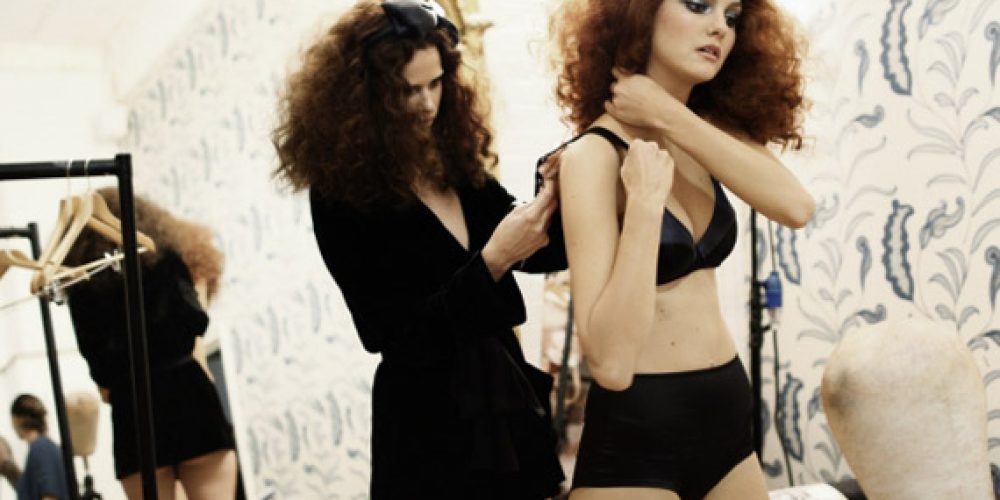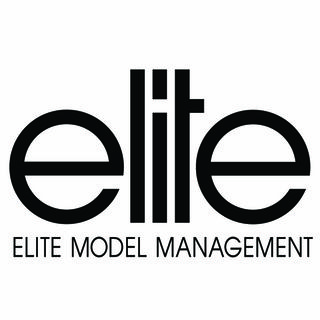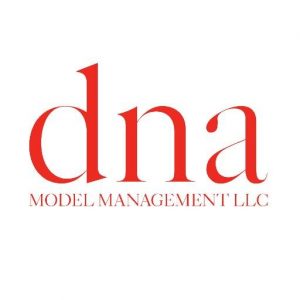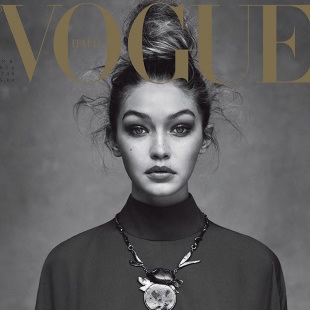Modeling begins long before the final production – whether a sleek glossy ad or a runway show. In our description of editorial fashion models above we actually jumped into the middle of the fashion design and marketing process. Models are involved in creating and developing fashions all along; it’s just the editorial and runway models that everyone hears of. Most of these other models are supplied by “commercial fashion” agencies rather than “editorial” agencies; some kinds of fashion models don’t come from agencies at all. Let’s see who they are.
Fit Models
As a designer creates concepts for his new line he will find fabrics to complement them. The next step is to start draping those fabrics on a model for inspiration, followed by drawings, patterns and a rough sample of each dress. A fit model will help along the way, wearing the draft sample as it is fine-tuned through hundreds of changes. Fit models are similar in dimensions to runway models, although they may come in other sizes later in the production cycle. Often they are older than runway models, may have an education in fashion design and marketing, and have stable, reliable personalities. A fit model may work full or part time for the same design house for several years, and can make very good money at it. A good fit model is part of the creative team, helping make suggestions on fit that can be incorporated into the design. The most important thing about a fit model is that their dimensions be precise and unvarying. Even a half inch change in waist or hips can disrupt the process that leads to the final show sample or, later, production patterns. Later in the
design/production cycle, fit models in many different heights and sizes may be used.
Showroom Models
After samples are created the designer begins marketing his line through shows and advertising. Retail fashion buyers and the press are invited to formal presentations, perhaps in a hotel ballroom or in the designer’s showroom. Models wear the collection in fashion shows. In addition, buyers may make an appointment for a showing just for themselves. Showroom models will wear the line for the buyer, often coming up for a close inspection and interacting with the buyer. It is a less formal, more personal type of modeling than runway. A showroom model needs to have the height and body type
of a runway model, although sometimes the requirements are relaxed a little. Designers may use part-time or hourly models, or they may have one or more full-time models in-house who can present designs to buyers as needed. Hourly showroom models may be new fashion models from editorial agencies who are gaining experience, but showroom models may not be represented by an agency at all. Often they are hired through ads in professional publications like Women’s Wear Daily, and they may have light office duties in addition to modeling.
Usually showroom models are not the ones used on formal runway shows or in print advertising, although a designer may use them to produce his look book.
Runway and Campaigns
A major part of marketing a new line is formal fashion shows like Fashion Week in New York or Los Angeles, print advertising and, hopefully, appearance in editorial stories in the major fashion magazines. This is where the traditional “fashion model” shines.
The Road Show
Designers may pack their line up and take it to major retailers around the country for local fashion shows and presentation to buyers. These “trunk shows” might use local models, but often will use the designer’s normal showroom models, who may be either long term employees or hired for the tour from agencies in New York or Los Angeles.
Retail Modeling
As the line hits retail stores around the country, the stores (individually or in cooperation with a mall or other stores) may
hold local fashion shows, or in-store “tea room” presentations of their new lines. For these shows local models are usually used. These local shows do not demand the full “runway model” specifications; any model who looks good in the sizes delivered to the store may end up modeling in them.
Catalog/Fashion Print Modeling
National and local retailers use models to produce catalogs, magazine ads and newspaper inserts. These models are usually
tall (5’8” and up) and slim (not necessarily as rail-thin as an editorial model). But they generally have what the fashion industry calls a “commercial” appearance – attractive, upscale mainstream “All American” good looks.







Comments 0